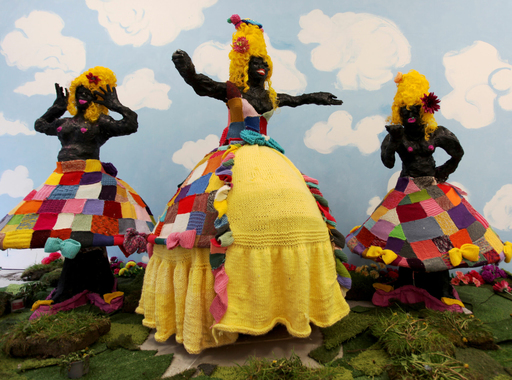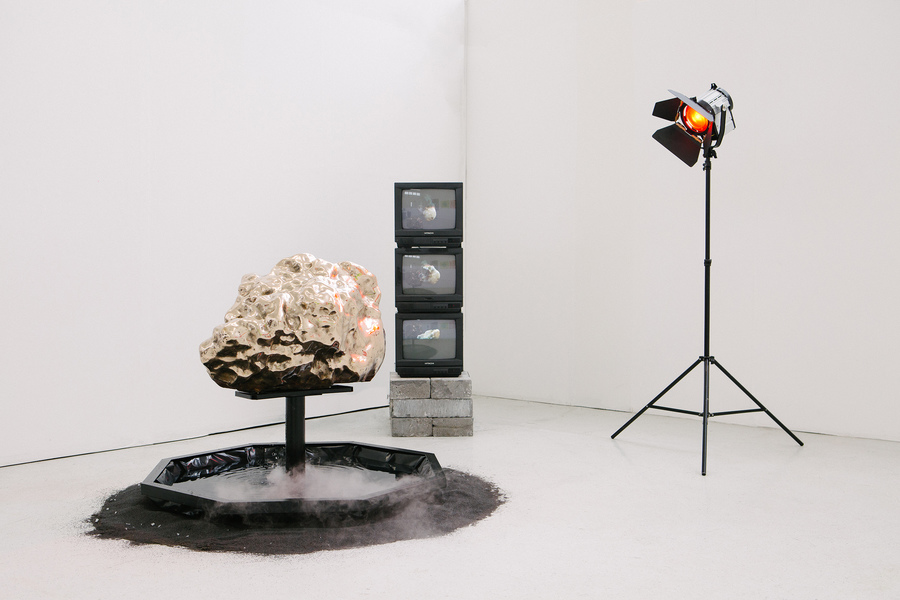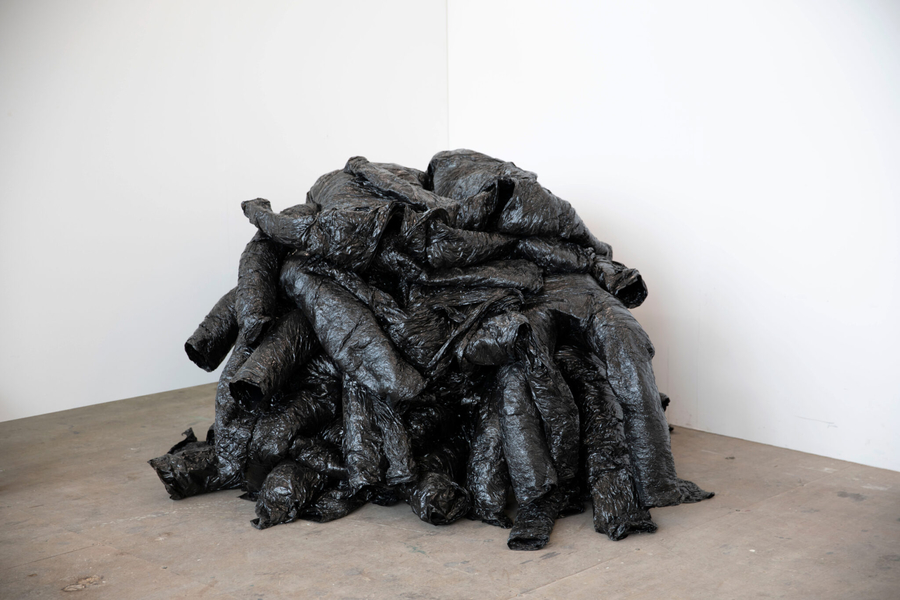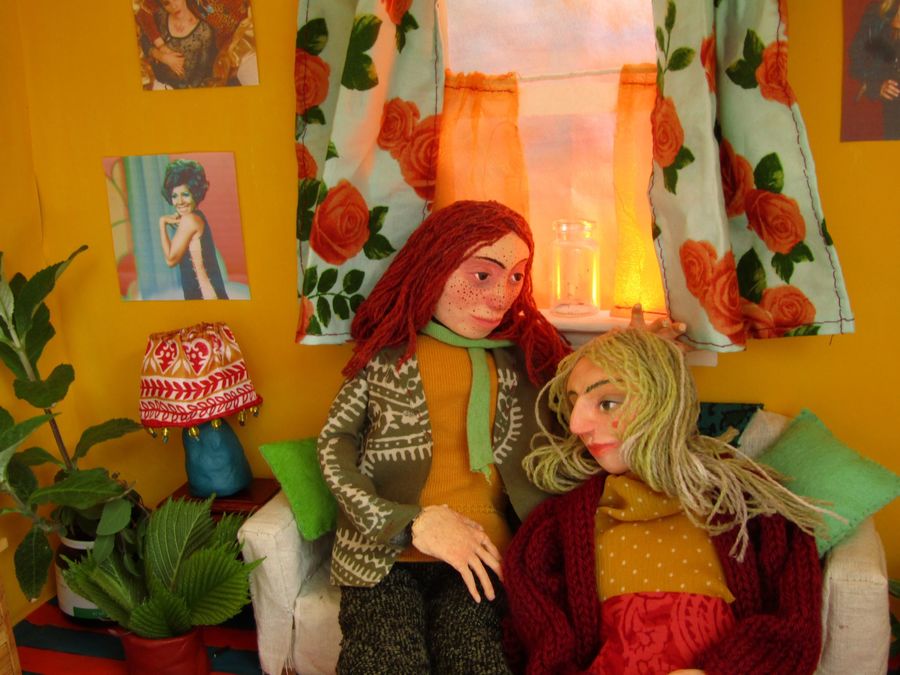The Show Must Go On: Scottish Degree Shows 2021
After an impossible year, the graduates of Glasgow School of Art, DJCAD and Edinburgh College of Art share bodies of work that are – against all odds – considered, critical, poignant and memorable
On entering the Glasgow School of Art Graduate Showcase, the signs of protest are clear as students sacrifice limited image space to ‘Hold GSA, Accountable' banners. In an open letter by GSA students to the university, the students outline that they were misled upon enrolment, claim there was no effort made for a socially distanced return yet they were still made to pay full fees, with many students encouraged to independently find and finance their own studio spaces. In sum and across the board, this year's graduates have been through a lot. The fact that they have managed to complete their degree, while actively protesting their experiences during this time, is a huge feat.
Glasgow School of Art
Looking at the work on the (sometimes hard-to-navigate) websites, there’s a displacement of the usual departmental hotspots, where the limelight shines brightest on what the faculty deem as most praiseworthy. Similarly, viewing the shows online means losing the immediate impact and scale of the work, which arguably gives an advantage to the more subtle works that are prone to being missed.
A work that could have been overlooked is Jake Gatehouse’s photographic series. The works could be dismissed as mundane landscape scenes, but upon closer reflection they reveal themselves as self-portraits of the artist fully submerged in different bodies of water. Also experimenting with the limits of self-portraiture, Blair Wallace wrapped himself in what looked like duct tape, but was actually pallet wrap, 30 days in a row to create a collection of encased impressions of himself. Some of the most successful works shared a similar tenacity and humour, such as Bella Hansard’s Musical Playground in Wasteland, a video featuring a xylophonic instrument made (and played) between the rocks near the old Govan dry docks.
With a patient gaze, Francisco Llinas Casas’ film poetically documents his collaborative crafting with his mother on her first day as an immigrant in Glasgow. Speaking in Spanish, only some words are picked out in text on screen: “free”, “a fierce tribe”, “tacit”, “blood”. They slowly work towards one another through complex wool knots, as the subtitling gently negotiates with anglocentric expectations of translation.
Also working lyrically with family heritage and forms of manual labour, Molly Stubbs recreates, at magnified scale, a resuscitation device for canaries based on those used in mines. It’s impressively made, sets out to engage audiences physically, and becomes a point where historical enquiry and lyrical and literal reanimation meet.
Holly Murphy engages with lost history in their work, Vita Thenogi. Carefully using accurate methods from the 12th century, Murphy has created a document of Saint Thenog, mother of Glasgow’s patron Saint Mungo. What emerges is a considered and retroactive relic, a material token against the erasure of “a woman, single mother, abuse survivor, and religious refugee”.
Josie KO’s sculptural work, My Ladye with the Mekle Lippis, is a highlight of the showcase. This installation was created in response to a poem by Scottish poet William Dunbar titled Of Ane Blak-Moir, which records the first documentation of an African woman in Scotland. The large playful papier-mâché installation immediately subverts the poet’s original racist observations by presenting the Black women with autonomy and joy, standing tall with wide smiles and glitter.

Yet it still intentionally mirrors a mammy-like caricature reflecting the complexity of the Black British experience. Aware of the predominately white audience her artwork would receive, KO plays with this power dynamic by manipulating the audience into performing a reenactment of their own oppressive white gaze unto the Black bodies, echoing the racial performativity initially described in the poem.
Duncan of Jordanstone, Dundee
Even without the IRL encounter, many Dundee students share artworks that take a direct interest in their craft, texture and materials. Take Angharad Jones, who works in embroidery and ceramics. Jones combines images of women that are built up from a dense network of stitches, with the motif of the circle as a symbol of the infinite underestimation of craft. Nevertheless, Jones demonstrates some of the possibilities and versatility of these techniques.
Speaking directly to the translation of the material to the virtual, Rachel Blackwell sets up a sophisticated feedback system between a digitally scaled-up “find on a beach”, of which she created an enlarged bronze replica via photogrammetry software. Documentation shows an elegant installation that draws together dramatically distinctive temporalities, evoking the ancient Mayan practice of scrying (looking into an obsidian mirror as a way to divine the future) and contemporary museological technologies.
Less cutting-edge technology is used to poignant effect in the work of Tilda Williams-Kelly, who works with European oil painting histories and techniques, putting them to service in representations of Black women artists in her life. The works demonstrate Williams-Kelly’s skill and ambitious vision for the repurposing of the practice of painting as dignifying and exalting those who have previously been routinely subjugated by the medium.
Many of the graduates’ works demonstrate a fascination with layering, and push the possibilities of surface. Ruby Leeson’s installation of ceramic and found objects, for example, brings the roughness and the palette of Scottish landscapes into new dimensions. The works create a landscape painting realised through installation, rewarding a closer look.
In contrast, Aimee Finlay pushes the allure of surface texture and patina into experimental realms, as she makes use of digital scanning and modelling to create a virtual copy of what looks like a cast of a small book or stone tablet with “ROSEMARY” set into its front. The animations quietly pull themselves apart as the computer-generated camera moves around and shows the object hovering above some snow on grass, making for a quietly strange and intriguing work.
Hannah Feuerstein uses museological display conventions to house her drawings and red earthenware clay forms, using her own creative capabilities to reimagine the idea of archive and what can be housed there, and give a charge to personal and everyday histories that may be left out of circuits of historical value. Feuerstein’s drawings are particularly captivating in their dramatisation of humble objects.
In graphite on MDF board, Lily Davidson virtuosically documents the gnarly organic forms of trees. Doing so, she activates and invites a slower and more attentive gaze at nature as a means of advocating for its protection from its slow destruction.
While it would be a treat to see some of the close details of the drawings and sculpted objects, Martha Cole’s online showcase comes at the top of the “wish I was there” list. They’re big, bold and bright, with humour and a gentle sense of joy in the bandy-limbed figures that sit on their mesmerising patterns.
The good vibes keep coming, even amid the murder and vengeful cursing of the Welsh mythologies told in Dulcie Ghost’s Gwawr & Blodeuwedd. A Queer Welsh love story. Entirely (and presumably painstakingly) handmade, it tells the story of Blodeuwedd, created from flowers and arranged to be married. She breaks it off and so is turned into an owl, but only at night. In the animation, Blodeuwedd finds a new lover, Gwawr, as an enchanting refashioning of traditional mythology.
Edinburgh College of Art
One work that sticks out in Edinburgh is by Lauren Green. It’s the second video on her digital showcase page. The first is a tongue-in-cheek ad campaign to move to Mars, the implication being it’s all gone to shit here on Earth. But the next one starts as if by accident, the phone camera rubbing along the silver costume. Then it rests its gaze on the ground, and in the background is the noise of dirt bikes. Not Mars, a racing track. A fixed shot shows the actor in the spacesuit having a close look at the prop – what looks like two shopping baskets disguised as a silver retro-space age gizmo. The two together talk about escapism and the labour of fantasy, with humour and genuine intrigue.
For more space-related content, there’s Andrea Robertson’s short video work, Playing Fetch With Laika. In it, someone’s throwing a light up ball up and down at night, dropping it and picking it up again. At the end, it keeps floating up, pops out of sight and a dog can be heard barking – Laika being the dog and first living creature to orbit the Earth.
Continuing with the always-relevant theme of existential crisis, Lorena Levi’s paintings delve into the psychology of family, friendship, online encounters and socialising. In her group portraits, body language and expressions contain at least one novel’s worth of narrative and tension. By different means, Hope Turnbull brings out a surreal note of disturbance in her gently unusual and alluring oil paintings of groups of people in comfortable-seeming interiors. Nevertheless, they sound out a note of angst.
For some students, the last year’s been spent in pursuits only loosely held by their Intermedia Fine Art degree. Alliyah Enyo has made a distinctive and haunting sound, music and video work. See in particular HYMN *4 empty club*, which shows off her powerful vocals and singular visual identity. Once it’s begun, just try turning it off.
Meanwhile, Oliver FJ Jones’ work sets sight on the fashion industry. Their skilfully constructed garments involve fantastical references to suits of armour, while also combining usually kept-apart design features like bows and a bronze-style breastplate. The works are striking and dramatic.
Also finding their own idiosyncratic and impactful visual language, Yizhou Aiden Sun’s photographs of tied-up semi-peeled bananas draw out an unexpected squeamishness, each one a meditation on the artist’s experience of British-Chinese cultural identity, queerness, and mental health.
After a year of all different kinds of displacement, Lorna Phillips’ practice takes place outside, by an empty ancient lakebed in Kunda, Estonia. Phillips has worked with clay taken from the site, making well-crafted pots and vessels using techniques practised since the earliest human settlements on the land.
Like some of the other graduates who critically engage with other making processes outside of the usual artistic disciplines (like pottery, garment-making and singing), Vira Putri centres the forms, materials and processes of Jamu, the Indonesian medicinal practice. Putri’s installation creates a “space between the studio and the kitchen”, using natural inks taken from material experiments and research using Jamu ingredients. It’s an inviting space that Putri also makes a metaphor for “the objectified Asian female body as she sits in voyeuristic stillness.”
Okay, so it’s a pity not to be able to smell the paint that’s still drying on fresh works, but with a bit of imagination and patience, 2021 graduates made sure the showcases still brought with them the overwhelming and thrilling sense of debut as a new generation of artists come out into the world.
gsashowcase.net
dundee.ac.uk/graduate-showcase
graduateshow.eca.ed.ac.uk


